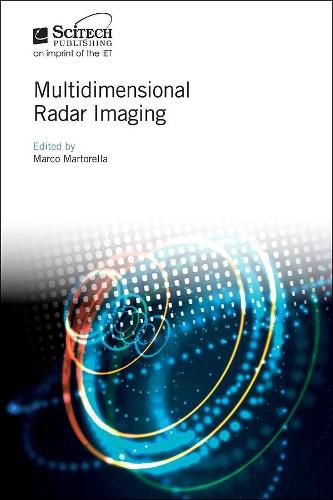Readings Newsletter
Become a Readings Member to make your shopping experience even easier.
Sign in or sign up for free!
You’re not far away from qualifying for FREE standard shipping within Australia
You’ve qualified for FREE standard shipping within Australia
The cart is loading…






Synthetic aperture radar and inverse synthetic aperture radar (SAR/ISAR) images have been largely used for monitoring small to large areas and more specifically for target recognition/identification. However, the technology has limitations due to the use of classical monostatic, single channel, single frequency and single polarization systems. To overcome these limitations, solutions have been proposed that show the benefit of using multiple frequencies, spatial channels, polarisations and perspective, in one word multi-dimensional radar imaging systems when dealing with non-cooperative targets.
Multidimensional Radar Imaging introduces a new framework within which to address the problem of radar imaging and target recognition as it jointly looks at optimising the use of multiple channels to significantly outperform classical radar imaging systems.
It has been used in the military within NATO for the last few years and the technology is now declassified.
Topics covered include three-dimensional ISAR; STAP-ISAR; wide-band multi-look passive ISAR; radar tomography; multistatic PCL-SAR; fusion of multistatic ISAR images with large angular separation; rotor blade parameter estimation with multichannel passive radar; multistatic 3D ISAR imaging of maritime targets; challenges of semi-cooperative bi/multistatic SAR using Cosmo SkyMEd as an illuminator; and lessons learnt from the NATO SET-196 RTG on multi-channel/multi-static radar imaging of non-cooperative targets.
$9.00 standard shipping within Australia
FREE standard shipping within Australia for orders over $100.00
Express & International shipping calculated at checkout
Synthetic aperture radar and inverse synthetic aperture radar (SAR/ISAR) images have been largely used for monitoring small to large areas and more specifically for target recognition/identification. However, the technology has limitations due to the use of classical monostatic, single channel, single frequency and single polarization systems. To overcome these limitations, solutions have been proposed that show the benefit of using multiple frequencies, spatial channels, polarisations and perspective, in one word multi-dimensional radar imaging systems when dealing with non-cooperative targets.
Multidimensional Radar Imaging introduces a new framework within which to address the problem of radar imaging and target recognition as it jointly looks at optimising the use of multiple channels to significantly outperform classical radar imaging systems.
It has been used in the military within NATO for the last few years and the technology is now declassified.
Topics covered include three-dimensional ISAR; STAP-ISAR; wide-band multi-look passive ISAR; radar tomography; multistatic PCL-SAR; fusion of multistatic ISAR images with large angular separation; rotor blade parameter estimation with multichannel passive radar; multistatic 3D ISAR imaging of maritime targets; challenges of semi-cooperative bi/multistatic SAR using Cosmo SkyMEd as an illuminator; and lessons learnt from the NATO SET-196 RTG on multi-channel/multi-static radar imaging of non-cooperative targets.